Epoxy flooring is a popular choice for residential, commercial, and industrial spaces due to its durability, versatility, and low maintenance. It is a type of flooring that is made from a combination of epoxy resin and hardeners, creating a strong and durable surface that is resistant to stains, chemicals, and wear and tear.
The application process for epoxy flooring involves mixing the resin and hardeners and then spreading the mixture over a prepared concrete surface. The flooring is then left to cure and harden, creating a strong and seamless surface.
There are many benefits to using epoxy flooring in your space, including:
- Durability: Epoxy flooring is extremely durable and can withstand heavy foot traffic, making it ideal for high-traffic areas.
- Versatility: Epoxy flooring is available in a variety of colors, patterns, and textures, giving you the freedom to customize your space.
- Easy to Clean and Maintain: Epoxy flooring is easy to clean and maintain, as it is resistant to stains and chemicals.
- Chemical and Stain Resistant: Epoxy flooring is highly resistant to chemicals and stains, making it a popular choice for industrial and commercial spaces.
- Cost-effective: Epoxy flooring is a cost-effective option, as it is more affordable than other types of flooring and can last for many years.
However, there are also some cons to consider before choosing epoxy flooring:
- Slippery When Wet: Epoxy flooring can be slippery when wet, making it unsuitable for areas that are prone to spills or moisture.
- Not Resistant to Heat: Epoxy flooring is not resistant to high temperatures, which can cause it to crack or peel.
- Requires Professional Installation: Installing epoxy flooring requires specialized equipment and skills, making it necessary to hire a professional.
- Can be Prone to Cracking and Peeling: Epoxy flooring can be prone to cracking and peeling over time, especially in areas with heavy machinery or equipment.
- Limited Color Options: While epoxy flooring is available in a variety of colors, the options are still limited compared to other types of flooring.
Epoxy flooring is suitable for a variety of spaces, including:
- Residential Spaces: Epoxy flooring can add a modern and sleek look to any home, making it a popular choice for basements, garages, and even living spaces.
- Commercial Spaces: Epoxy flooring is commonly used in commercial spaces such as retail stores, restaurants, and offices due to its durability and low maintenance.
- Industrial Spaces: Epoxy flooring is a popular choice for industrial spaces like warehouses and factories due to its resistance to chemicals and heavy machinery.
To maintain your epoxy flooring, it is recommended to sweep and mop regularly and avoid using abrasive cleaners. In case of any spills, clean them up immediately to prevent staining.
If epoxy flooring is not suitable for your space, there are alternatives to consider, including:
- Concrete Staining: This involves staining the concrete surface to give it a desired color and design.
- Rubber Flooring: This is a durable and cushioned flooring option that is ideal for areas with heavy foot traffic.
- Vinyl Flooring: Vinyl flooring is a cost-effective and versatile option that comes in a variety of designs and colors.
Key Takeaways:
- Epoxy flooring offers durability and versatility and is easy to clean and maintain, making it a cost-effective option for various spaces.
- However, it may be slippery when wet, not resistant to heat, and requires professional installation. It can also be prone to cracking and peeling, with limited color options.
- Consider the specific needs of your space and explore alternatives such as concrete staining, rubber flooring, and vinyl flooring before choosing epoxy flooring.
What Is Epoxy Flooring?
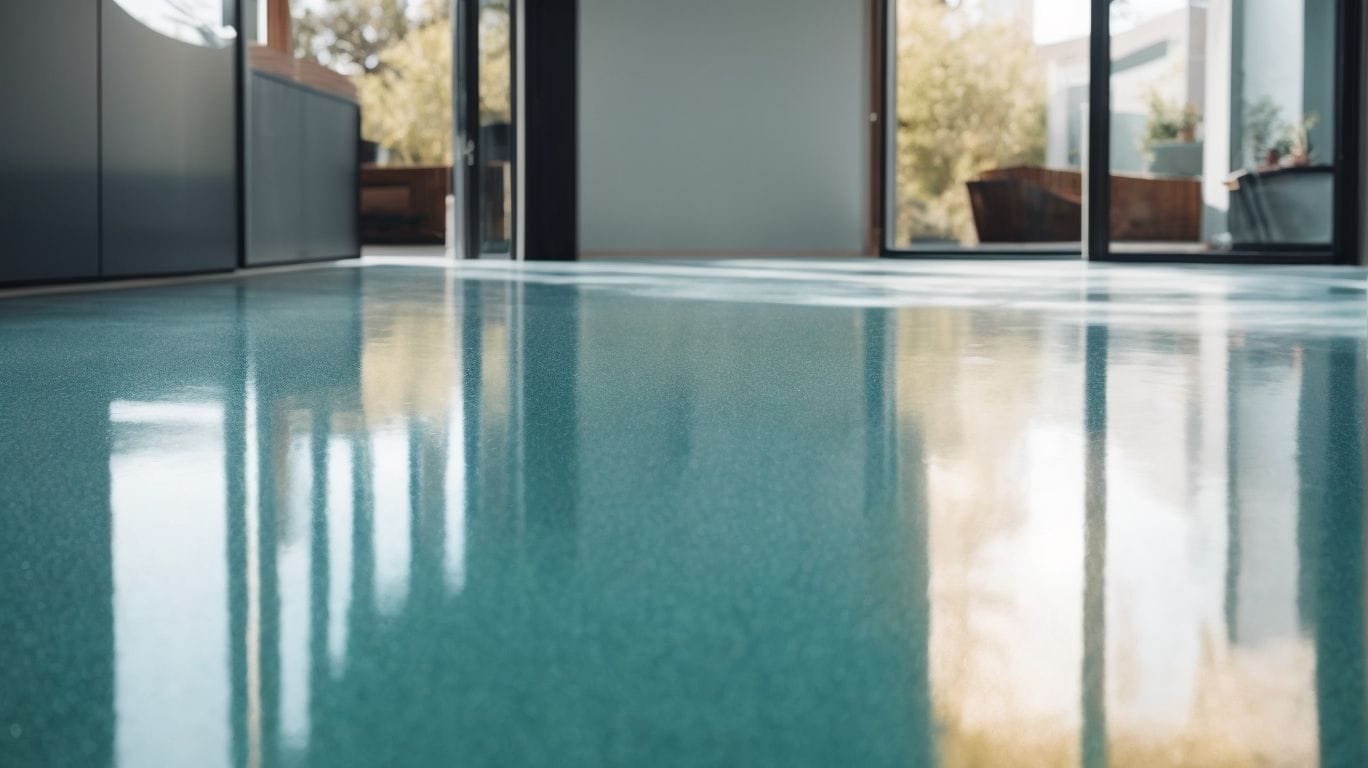
Photo Credits: Diyepoxyresin.Com by Eugene Harris
Epoxy flooring is a highly durable and long-lasting option commonly used for garage, industrial, or commercial floors. It involves the application of multiple layers of epoxy to the floor, with a minimum depth of two millimeters. This creates a sturdy and resilient surface that can withstand heavy loads and is highly resistant to chemicals and stains.
Pro-tip: To achieve the best results and ensure longevity, it is crucial to properly prepare the surface before applying epoxy flooring.
How Is Epoxy Flooring Applied?

Photo Credits: Diyepoxyresin.Com by William Sanchez
- To properly apply epoxy flooring, start by preparing the surface with a thorough cleaning and etching to ensure proper adhesion.
- Next, follow the manufacturer’s instructions to mix the epoxy resin with the hardener.
- Apply the epoxy coating using a roller or brush.
- If necessary, allow the first coat to cure before applying a second coat.
- For added durability and gloss, finish with a top coat.
Pro-tip: Before starting the application process, make sure the surface is completely dry and free from any contaminants for a flawless finish.
What Are The Pros Of Epoxy Flooring?
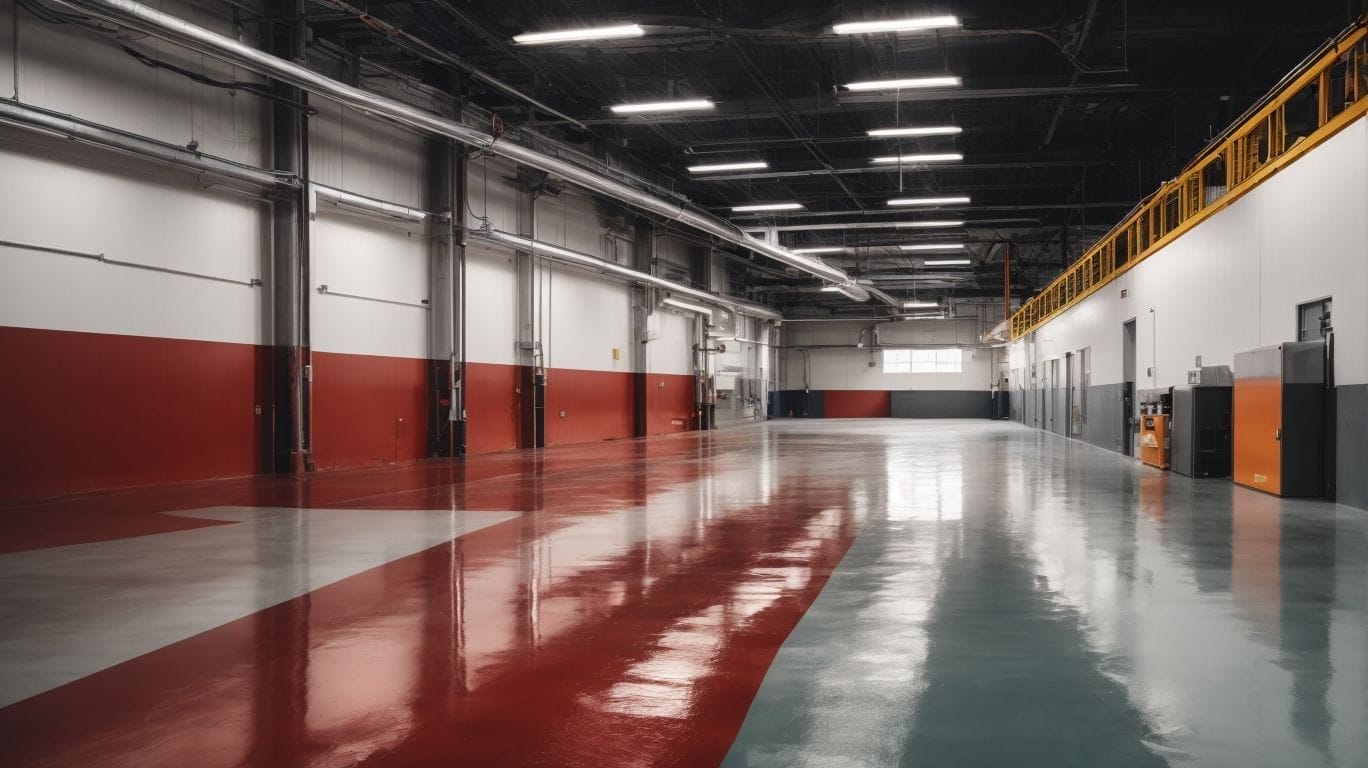
Photo Credits: Diyepoxyresin.Com by Billy Carter
Epoxy flooring has become a popular choice for both residential and commercial spaces due to its many benefits. In this section, we will discuss the various pros of epoxy flooring, including its durability and versatility. We will also explore its easy maintenance and resistance to chemicals and stains, making it a practical and cost-effective option for flooring. By the end, you will have a better understanding of why epoxy flooring may be the right choice for your space.
1. Durability
- Epoxy flooring’s durability is derived from its ability to withstand heavy foot traffic and resist wear and tear.
- Thanks to its seamless and non-porous surface, it can prevent damage from moisture, chemicals, and stains, ultimately enhancing its longevity.
- To maintain its durability over time, regular upkeep, such as routine cleaning and prompt repairs, is essential.
2. Versatility
- Design Options: Epoxy floors offer a wide range of design options, including various colors, patterns, and textures, making them suitable for diverse aesthetics.
- Application Surfaces: Epoxy can be applied to different surfaces such as concrete, wood, metal, and tiles, providing adaptability across various spaces.
- Usage Flexibility: Epoxy flooring is suitable for both indoor and outdoor settings, making it versatile for residential, commercial, and industrial spaces.
3. Easy to Clean and Maintain
Regular Cleaning: Keep your epoxy floor clean and free of dirt and debris by sweeping or dust mopping regularly.
Spot Cleaning: Quickly clean up any spills or stains with a mild detergent and water solution.
Deep Cleaning: For a more thorough clean, periodically scrub the floor with a scrub brush and a mixture of ammonia and water.
Maintenance: To keep your floor looking its best, consider recoating it every few years to maintain its appearance and protective qualities.
Pro-tip: Preserve the longevity and shine of your epoxy flooring by avoiding harsh chemicals or abrasive cleaners when maintaining it.
4. Chemical and Stain Resistant
Epoxy flooring is highly resistant to chemicals and stains, making it the perfect choice for areas that are susceptible to spills or chemical exposure. It creates a protective barrier against substances such as oil, gasoline, bleach, and other harsh chemicals, ensuring long-lasting durability and simple upkeep.
5. Cost-effective
- Epoxy flooring is a cost-effective option due to its long lifespan and minimal maintenance requirements.
- While the initial installation costs may be higher, they are balanced by the reduced upkeep expenses over time.
- The durability and resistance to chemicals and stains also minimize the need for frequent repairs and replacements, making it a cost-effective choice for flooring.
What Are The Cons Of Epoxy Flooring?
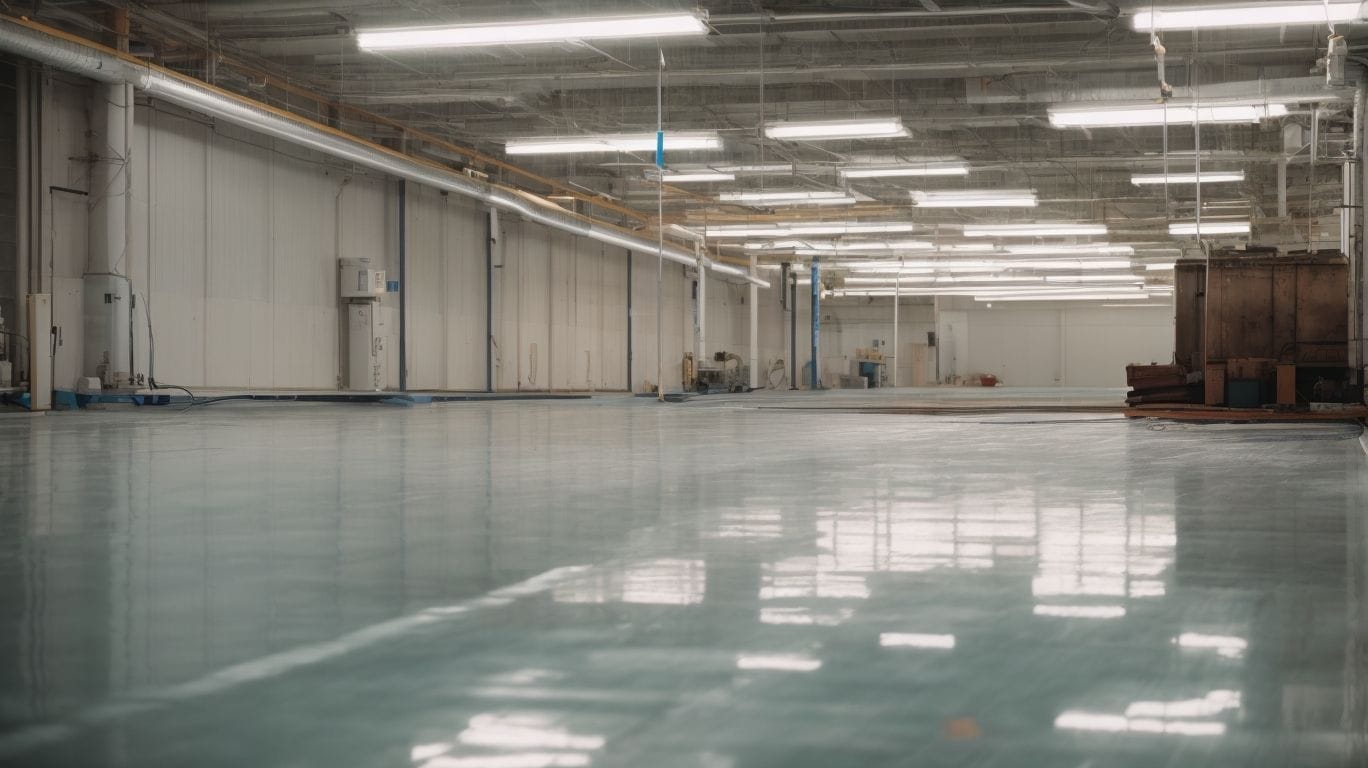
Photo Credits: Diyepoxyresin.Com by Kevin King
While epoxy flooring offers many advantages, it’s important also to consider the potential downsides of this popular flooring option. In this section, we’ll dive into the cons of epoxy flooring and explore why it may not be the right choice for everyone. From its slipperiness when wet to its limited color options, we’ll cover the various drawbacks that you should keep in mind when considering epoxy flooring for your space.
1. Slippery When Wet
- Place caution signs in areas prone to moisture.
- Apply anti-slip coatings or additives to the epoxy surface.
- Regularly clean and maintain the flooring to prevent buildup of slippery substances.
- Implement proper drainage systems to minimize water accumulation.
- Consider alternative flooring options for spaces with high exposure to moisture, such as rubber or vinyl flooring.
When dealing with slippery epoxy flooring, it’s important to prioritize safety measures and consider alternative flooring options, such as rubber or vinyl flooring, to ensure a secure and suitable environment.
2. Not Resistant to Heat
- To maintain the quality of your epoxy flooring, it is important to avoid exposing it to high temperatures that exceed its resistance threshold, as it is not designed to withstand heat. Doing so can result in discoloration, warping, or even peeling of the epoxy surface.
- To prevent direct contact with the epoxy floor, consider using protective mats or coasters under hot items such as cooking equipment or vehicle tires.
3. Requires Professional Installation
- Hire a certified epoxy flooring professional with experience in the installation process.
- Prepare the surface by ensuring it is clean, dry, and free of any contaminants or imperfections.
- Verify that the environmental conditions are suitable for proper epoxy installation, including the temperature and humidity levels.
- Follow the manufacturer’s instructions for mixing and applying the epoxy resin to achieve the best results.
- Allow sufficient time for the epoxy to cure and harden properly before allowing foot traffic or heavy use.
Fact: Epoxy flooring typically lasts for 10-20 years with professional installation and proper maintenance.
4. Can be Prone to Cracking and Peeling
Epoxy flooring, although durable, versatile, and cost-effective, may experience issues with cracking and peeling. These concerns can arise from improper installation, surface moisture, or substrate movement. To prevent this, it is crucial to have professional installation, moisture testing, and substrate preparation. Additionally, regular maintenance and prompt repairs can help minimize damage and extend the lifespan of the flooring.
5. Limited Color Options
When faced with limited color options for epoxy flooring, follow these steps:
- Evaluate your space and choose a color scheme that complements the surroundings.
- Research the available color options from different epoxy flooring suppliers to find the closest match.
- If the desired color is not available, inquire about custom color options from the manufacturers.
- Seek advice from professionals to determine the possibility of achieving the desired color through custom solutions.
- If the color limitation is a major issue, consider other flooring options.
Ultimately, prioritize both functionality and aesthetics when making your decision.
Is Epoxy Flooring Suitable for My Space?

Photo Credits: Diyepoxyresin.Com by Jonathan Perez
When considering flooring options for your space, one material that may come to mind is epoxy. While epoxy flooring offers a range of benefits, it may not be suitable for every type of space. In this section, we will discuss whether epoxy flooring is a suitable choice for residential, commercial, and industrial spaces. By understanding the pros and cons of epoxy flooring in each setting, you can make an informed decision about whether it is the right option for your needs.
1. Residential Spaces
- Evaluate space: Assess the size, layout, and traffic in residential areas.
- Consider usage: Determine if the space is for living, storage, or entertainment purposes.
- Choose design: Select from various epoxy flooring options to complement the aesthetics of residential spaces.
- Prep the area: Ensure proper cleaning and surface preparation before application.
- Hire professionals: Seek skilled installers for flawless and durable residential epoxy flooring.
2. Commercial Spaces
- Assess the traffic flow: Determine the volume and type of traffic that commercial spaces experience.
- Consider usage: Evaluate the specific activities and potential hazards in the area, such as heavy machinery or chemical exposure.
- Consult professionals: Seek advice from flooring experts to ensure that the epoxy flooring meets the unique demands of commercial spaces.
- Estimate maintenance: Factor in the maintenance requirements and costs to ensure that the flooring aligns with the upkeep capabilities of commercial spaces.
3. Industrial Spaces
- Evaluate the type of industrial space to determine its suitability for epoxy flooring, taking into account factors such as heavy machinery, foot traffic, and potential exposure to chemicals or oils.
- Prepare the surface by removing any existing coatings, cleaning it thoroughly, and repairing any cracks or divots to ensure a smooth and even application of the epoxy flooring.
- Select the appropriate epoxy formulation based on the specific requirements of the industrial space, such as high-temperature resistance, anti-slip properties, or rapid curing for minimal downtime.
- Follow the manufacturer’s guidelines when applying the epoxy coating, including proper mixing ratios, temperature conditions, and adequate ventilation.
- Allow sufficient time for the epoxy flooring to cure before subjecting the industrial space to heavy use, ensuring its longevity and performance.
How Do I Maintain Epoxy Flooring?
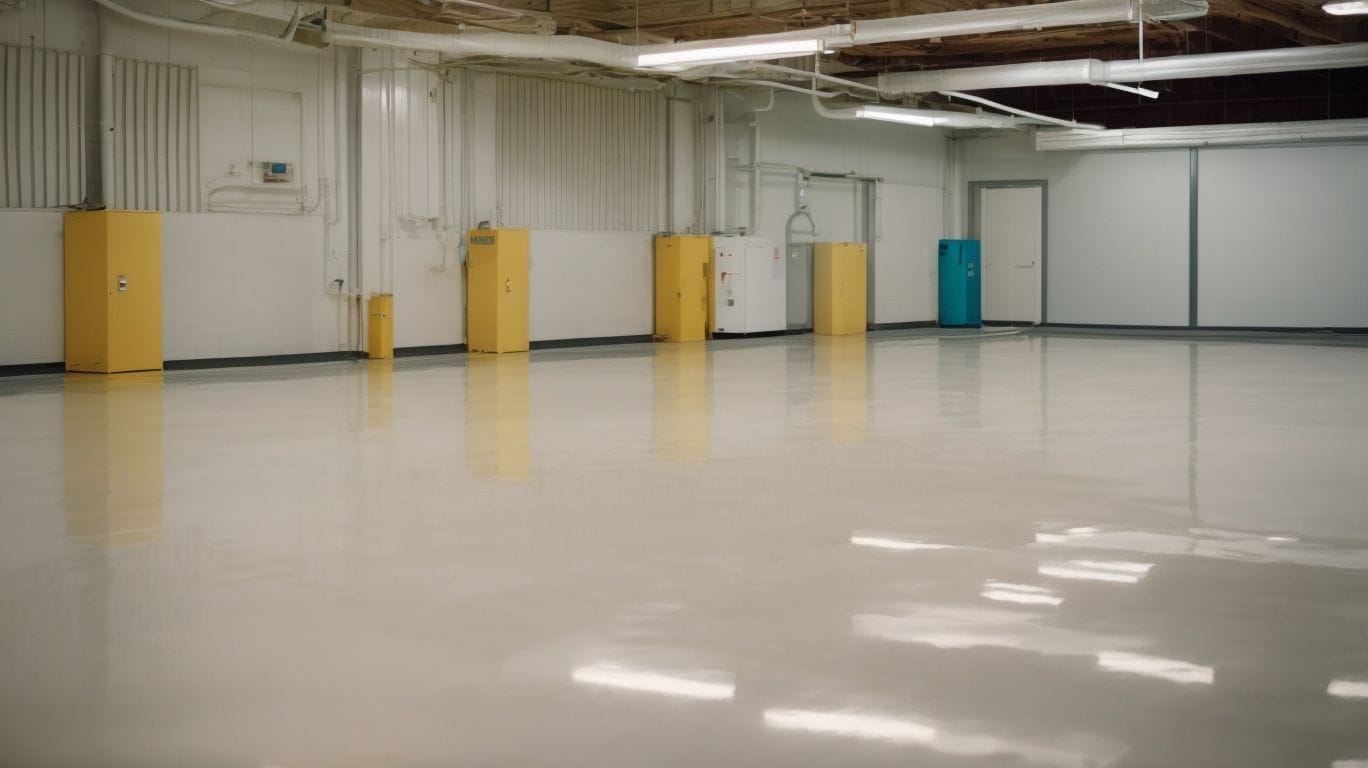
Photo Credits: Diyepoxyresin.Com by Steven Perez
- Regular Cleaning: To properly maintain your epoxy flooring, start by sweeping or vacuuming the floor to remove any debris, and then mop with a mild detergent solution.
- Prevent Scratches: Protect your epoxy flooring from scratches by placing felt pads under furniture legs and avoiding dragging heavy items across the floor.
- Protect from Chemicals: In order to prevent damage to the epoxy coating, be sure to promptly wipe up any spills and avoid using harsh chemicals on the floor.
- Prevent Moisture Damage: To prevent water damage, it is recommended to use rugs or mats in areas that are prone to moisture.
- Regular Inspections: To ensure your epoxy flooring stays in top condition, regularly check for any damages or wear and tear and apply epoxy floor sealant when necessary.
What Are The Alternatives to Epoxy Flooring?
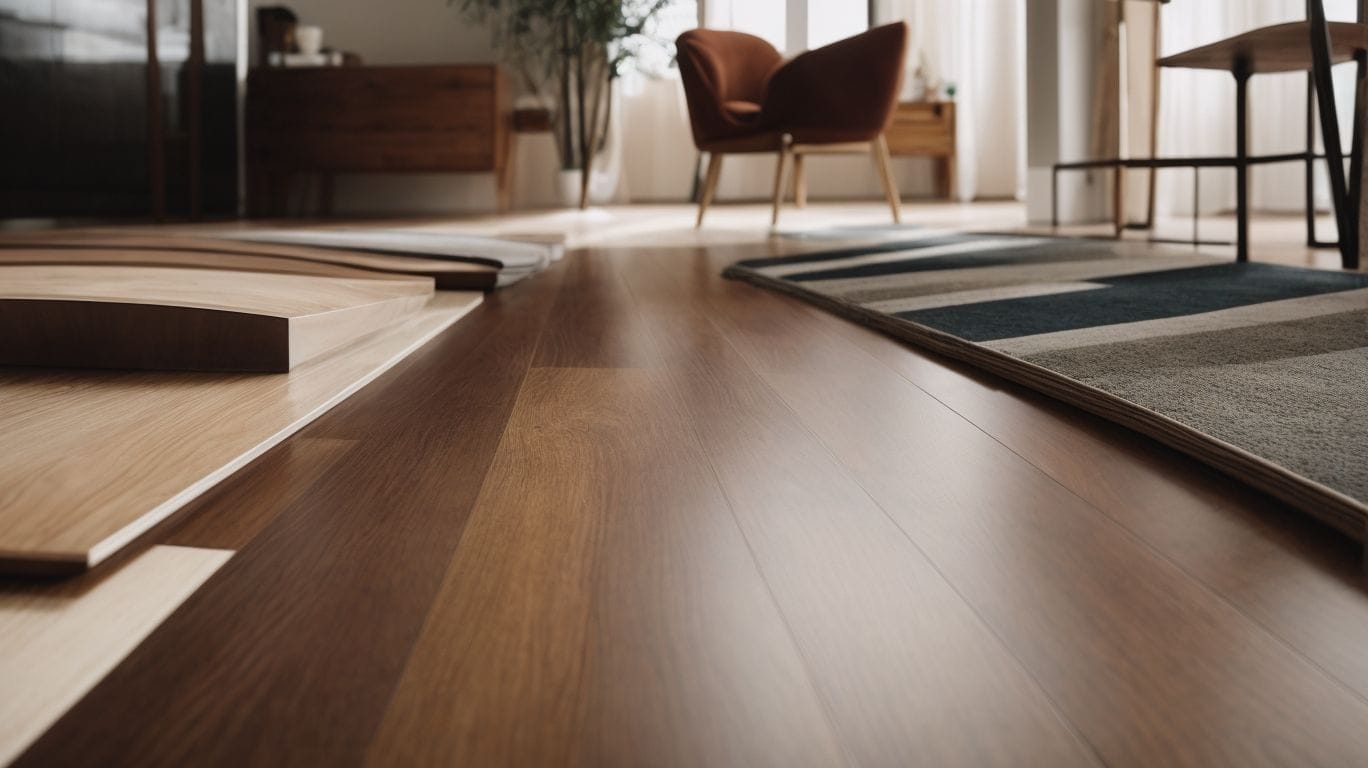
Photo Credits: Diyepoxyresin.Com by Roy Anderson
While epoxy flooring has its own set of advantages and disadvantages, it may not be the ideal choice for everyone. Luckily, several alternatives to epoxy flooring can also provide durable and visually appealing flooring options. In this section, we will discuss three popular alternatives to epoxy flooring: concrete staining, rubber flooring, and vinyl flooring. Each option has its unique benefits and drawbacks, so let’s take a closer look at each one to help you determine which may be the best fit for your needs.
1. Concrete Staining
- Prepare the surface: Ensure proper adhesion by cleaning and etching the concrete.
- Apply the stain: Evenly distribute the concrete stain using a sprayer or brush.
- Allow drying time: Before applying a sealer or finish, make sure the stain is completely dry.
- Seal the concrete: Protect the stained surface and enhance its appearance by applying a concrete sealer.
- Maintain the stained concrete: Preserve the finish and color by regularly cleaning and resealing the surface.
2. Rubber Flooring
Rubber flooring is a great alternative to epoxy flooring, offering cushioning, sound absorption, and durability. It’s especially suitable for high-traffic areas such as gyms and playgrounds, thanks to its shock-absorbent properties. With a variety of patterns and colors available, rubber flooring provides versatility for different spaces. Its slip-resistant surface also makes it an ideal choice for areas where safety is a top concern.
3. Vinyl Flooring
Vinyl flooring is a resilient and versatile option that mimics the look of natural materials such as wood or stone, making it suitable for various spaces. It is water-resistant and easy to maintain, making it a popular choice for areas prone to moisture or high foot traffic. In fact, vinyl flooring is an affordable and durable alternative to traditional hardwood or stone flooring, offering a wide range of design options to suit different interior styles.


